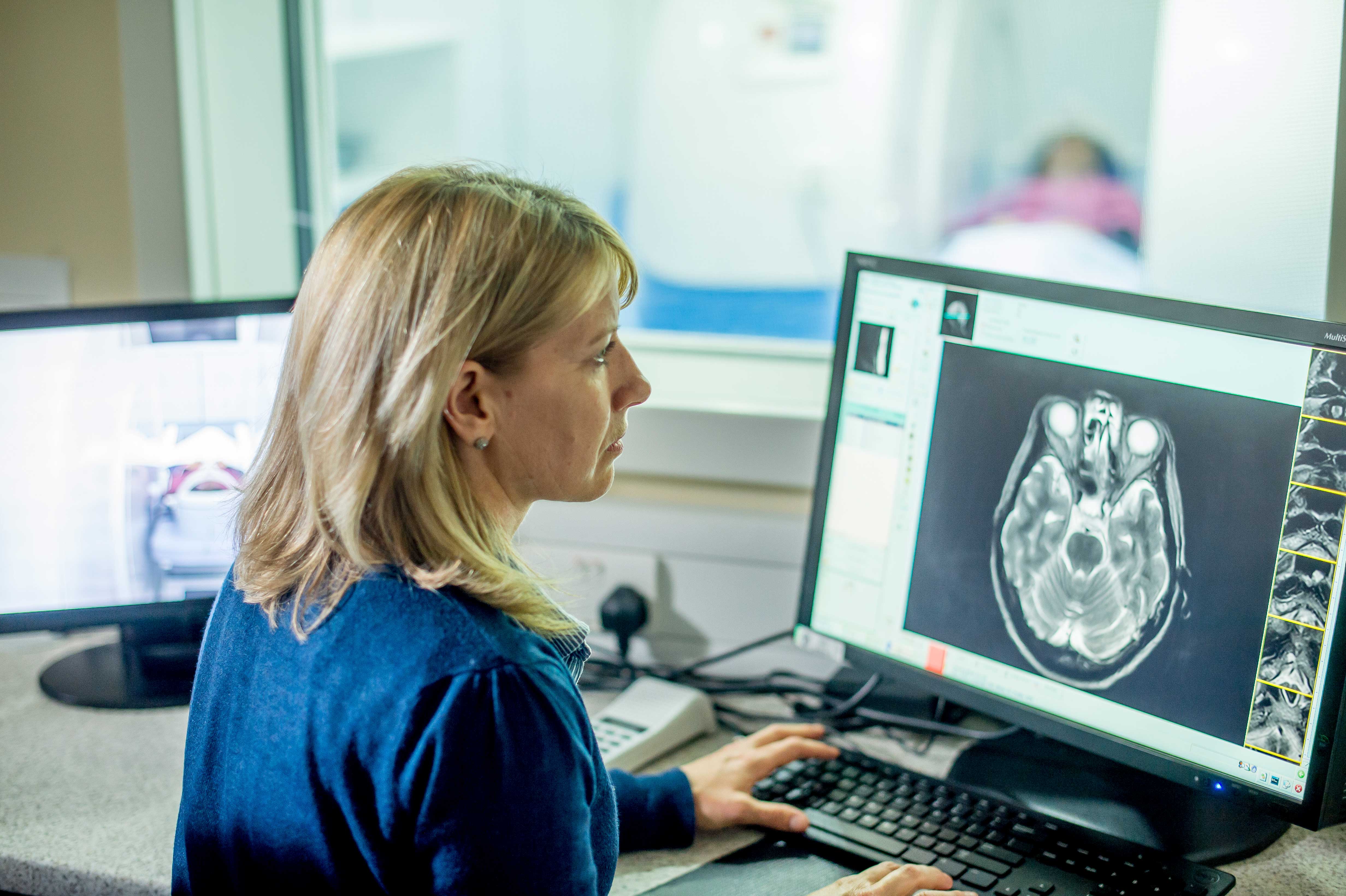Upgrade to Open Upright MRI Scanner Improves Image Quality and Reduces Scan Time

The Clinical Imaging team at AECC University College is pleased to announce an exciting new upgrade to its Open Upright MRI Scanner that will increase image quality, and reduce scan time by 10%.
An investment of over £100,000, the upgrade includes important updates to key components of the scanner. Clinical Imaging Lead at AECC University College, Matthew Southam, outlines these updates and explains what they mean for patients and clinicians:
“Investing in this upgrade was important to us because we want to ensure that we are delivering the best image quality that we can, in an environment that is as comfortable for patients as possible.
“With the Open Upright MRI Scanner, we can accommodate people who are claustrophobic or who aren’t able to lie flat in a conventional scanner. This service covers the whole South West region and parts of the South East for patients who aren’t able to go into a normal scanner.
“We want to make sure as many patients as possible can access the scanner and that it offers maximum usability for our clinicians. This upgrade brings lots of advantages for patients and clinicians.”
Improved image quality
“Due to its design, the image quality of the Open Upright MRI Scanner hasn’t previously been as high as a conventional 1.5 Tesla scanner, but this upgrade sees a significant improvement in this.
“We’re now able to better-match the quality of the enclosed scanners, thanks to an improvement in the technology. For the pathologies that we are scanning for, the MRI scanner is diagnostic and giving the answers that we need it to.
“The upgrade brings a new spectrometer, which interprets signal from the scanner and uses it more effectively. It’s like having more channels, so there’s more data coming in and more information to use in our images.”
New neurological package
“The upgrade brings a brand-new neurological package, which has significantly increased the brain scanning capabilities of the scanner. This uses new functionality called diffusion weighted imaging.
“This could allow us to detect strokes in patients that may not have been previously visualised. It has also meant the resolution is much greater, meaning we are much more able to pick up small pathologies like small cancers in the brain.”
Reducing scan times
“With this upgrade, the length of time that a scan takes is reduced by 10% – 50% per examination and this means less time in the scanner for patients who might find it challenging. This makes it easier for a patient to have their examination done and to get the diagnosis that they need.
“Reducing scan times also allows the team to see more patients in a day, reducing waiting times, giving patients access to fast and effective imaging.”
Improved positioning aids
“When you’re using an MRI scanner, it’s important to get whatever you’re looking at into the middle of the scanner. This can be difficult when you’re looking at a shoulder, for example, as there is limited space within the scanner.
“The new upgrade gives us a positioning aid that allows the patient to either be seated on their side, or lying down on their side. This allows the shoulder to be placed right in the middle, which improves the image quality. It’s also more comfortable for patients.
“We also have a brand-new system which allows us to do certain examinations standing. This can be beneficial when imaging the lumbar spine, for example, when being scanned sitting or standing can accentuate certain pathologies which would not be visualised at their worst if the patient was lying down.
“This is useful because some patients may only get pathology when they are standing up. If this is the case, it’s helpful to see what the pathology looks like in that position.
“We also have a new spine coil that means patients having their whole spine scanned don’t have to go in and out of the scanner as much. This makes the scan quicker and easier.”
Artefact reduction
“We also have a new sequence that reduces the artefact from previous surgery and metalwork. This is really important when a patient has had a spine fusion to repair disc space between vertebral bodies, or a fracture of the spine, and has metalwork in their spine.
“The metal influences the MRI signal and means that you can’t see the surrounding tissues, such as the nerve roots and spinal cord, which is what we’re interested in a lot of the time with spinal pathology.
“This new sequence allows us to reduce that artefact so we can see more useful information and get diagnoses for those patients who previously wouldn’t have been able to get that diagnosis without the new upgrade.”
Accepting referrals
All registered healthcare professionals can refer patients to our Open Upright MRI scanner. You can find out more about the Open Upright MRI scanner service here.